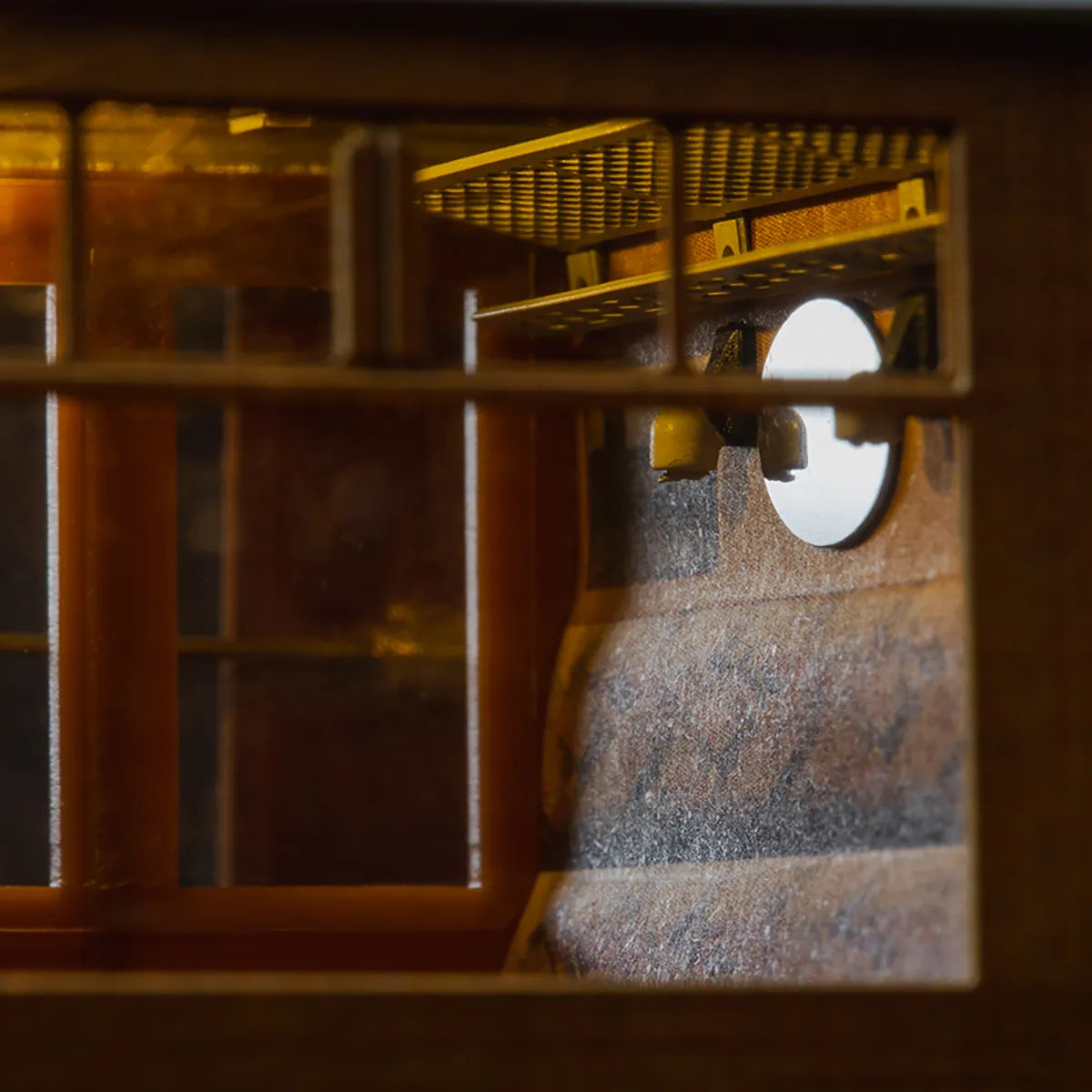Pre-Owned Finescale O Gauge
OO Gauge Projects
Building on the success of the Darstaed Mk1 Mainline and Mk1 Suburban coaches, the Thompsons are the next rung on our O gauge coaching stock ladder.
Featuring the brass sides and die-cast bogies seen on our other coaches, the Thompsons raise the bar once again with enhanced details, including individually fitted door handles and an exquisite interior.
A limited number of 11-coach Elizabethan sets are available for those of you wishing to recreate the East Coast Main Line’s most prestigious train of the 1950s; these coaches are furnished with the streamlined lower bodysides created for this service and The Flying Scotsman.
Our Thompsons won the British Railway Modelling Silver Award in 2022 and Hornby Magazine’s ‘Best O Gauge Carriage’ accolade the following year.
Scale
7mm Finescale O Gauge
Price
£229 each
Offers
10% off when buying 3 or more
Release Date
Out now!
Variants
5 Liveries, 8 coach types
Scale
7mm Finescale O Gauge
Price
£229 each
Offers
10% off when buying 3 or more
Release Date
Out now!
Variants
5 Liveries, 8 coach types
The LNER’s final mainline coach, Thompsons were a product of the company’s ‘Design for Comfort’ strategy and took their name from Chief Mechanical Engineer Edward Thompson. Entering service from 1946, eight types of three lengths were produced: 59’6” for full brakes, 61’6” for composites and 63’ for all the rest.
Thompsons were a significant improvement over previous rolling stock designs.
Cocooned within a steel skin, passengers glided smoothly on a new breed of bogie with a superior ride quality. Wider compartments and larger windows further enhanced the journey experience while a ‘simulated teak’ paint finish presented a more elegant appearance than the erstwhile wood panelling. Oval toilet windows at the carriage ends lent an air of art deco panache to the bodysides; this preference for curves over angles was continued when after a few years in service the original square-cornered main windows were replaced with a radiused design to prevent the corrosion caused by water build-up.
Though initially intended for front-line expresses, British Railways soon put Thompson coaches to work on rural services, bestowing the luxury of gangways and toilets on branch-line passengers for the first time. So while one traveller may watch in wonder as Peterborough or Retford flashed past the window with the howl of an ‘A4’ up front, another would be gazing out on the lush, rolling landscape of a border-country branch in the charge of a mixed-traffic stalwart.
Thompsons often featured in short-formation trains, making them another useful subject for O gauge modellers. From a three-coach branch-line set in Northumberland to a portion sliced from a ‘main-line’ service to serve Hull, York or Sheffield, duties were widespread and varied. Trips to the seaside were a regular fixture, with the coaches visiting Filey Holiday Camp on summer Saturdays in the 1950s as well as Kings Lynn, Hunstanton and Clacton on former Great Eastern routes from London Liverpool Street.
Thompsons were repainted from teak to crimson and cream during the 1950s, with many later appearing in BR maroon. Some BG coaches even made it into BR blue and survived into the 1980s for the carriage of parcels.
The Flying Scotsman and The Elizabethan were the two premier Eastern Region trains with which Thompsons were most strongly associated. Later batches of Thompson coaches included examples built specifically for the Scotsman, which were later allocated to The Elizabethan. These could be distinguished by bodyside panelling that extended over the solebars for a more streamlined appearance and were also equipped with double glazing and pressure ventilation. Bespoke Buffet Lounge coaches with diamond-tiled floors and ‘ladies retiring rooms’ – complete with sofa and washbasin – were another feature boasted by top-link Thompsons.
A colourful history, varied prototypes and wide-ranging nature render the Thompsons a Jack of All Trades in the world of coaches and a superb modelling subject.
The LNER’s final mainline coach, Thompsons were a product of the company’s ‘Design for Comfort’ strategy and took their name from Chief Mechanical Engineer Edward Thompson. Entering service from 1946, eight types of three lengths were produced: 59’6” for full brakes, 61’6” for composites and 63’ for all the rest.
Thompsons were a significant improvement over previous rolling stock designs.
Cocooned within a steel skin, passengers glided smoothly on a new breed of bogie with a superior ride quality. Wider compartments and larger windows further enhanced the journey experience while a ‘simulated teak’ paint finish presented a more elegant appearance than the erstwhile wood panelling. Oval toilet windows at the carriage ends lent an air of art deco panache to the bodysides; this preference for curves over angles was continued when after a few years in service the original square-cornered main windows were replaced with a radiused design to prevent the corrosion caused by water build-up.
Though initially intended for front-line expresses, British Railways soon put Thompson coaches to work on rural services, bestowing the luxury of gangways and toilets on branch-line passengers for the first time. So while one traveller may watch in wonder as Peterborough or Retford flashed past the window with the howl of an ‘A4’ up front, another would be gazing out on the lush, rolling landscape of a border-country branch in the charge of a mixed-traffic stalwart.
Thompsons often featured in short-formation trains, making them another useful subject for O gauge modellers. From a three-coach branch-line set in Northumberland to a portion sliced from a ‘main-line’ service to serve Hull, York or Sheffield, duties were widespread and varied. Trips to the seaside were a regular fixture, with the coaches visiting Filey Holiday Camp on summer Saturdays in the 1950s as well as Kings Lynn, Hunstanton and Clacton on former Great Eastern routes from London Liverpool Street.
Thompsons were repainted from teak to crimson and cream during the 1950s, with many later appearing in BR maroon. Some BG coaches even made it into BR blue and survived into the 1980s for the carriage of parcels.
The Flying Scotsman and The Elizabethan were the two premier Eastern Region trains with which Thompsons were most strongly associated. Later batches of Thompson coaches included examples built specifically for the Scotsman, which were later allocated to The Elizabethan. These could be distinguished by bodyside panelling that extended over the solebars for a more streamlined appearance and were also equipped with double glazing and pressure ventilation. Bespoke Buffet Lounge coaches with diamond-tiled floors and ‘ladies retiring rooms’ – complete with sofa and washbasin – were another feature boasted by top-link Thompsons.
A colourful history, varied prototypes and wide-ranging nature render the Thompsons a Jack of All Trades in the world of coaches and a superb modelling subject.
In terms of design and authenticity it feels Ellis Clark and Darstaed have again stepped up a gear, as they have with each successive product line, making these truly hard to resist.
In terms of design and authenticity it feels Ellis Clark and Darstaed have again stepped up a gear, as they have with each successive product line, making these truly hard to resist.
Mike Wild, Key Model World, July 2022
Mike Wild, Key Model World, July 2022


